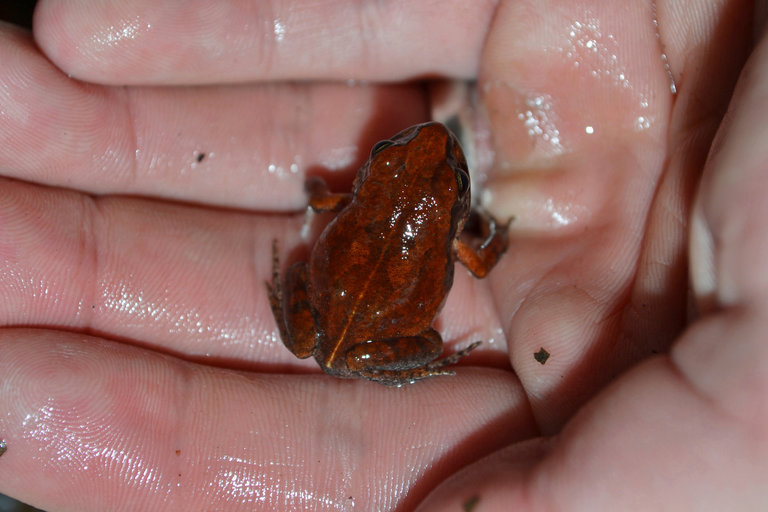
Amphibians are one of the most threatened groups of animals on the planet. Since the late 1980s, scientists have measured dramatic population declines from locations all over the world. The plummeting amphibian populations are perceived to be one of the most critical threats to global biodiversity. According to the IUCN, about 1 of every 3 amphibian species is facing extinction. Some of the greatest threats facing amphibians include climate change, disease, and habitat destruction.
But not all amphibian news is bad news. Researchers in Zimbabwe have found a rare species of frog alive and well that had not been seen since 1962. The Arthroleptis troglodytes – more commonly referred to as the cave squeaker – had been listed as critically endangered and possibly extinct on the international “red list” of endangered species. Researchers had been trying to locate this species for decades.
Cave squeakers are tiny – about an inch-long – and light brown with dark spots. They’re known for their high-pitched whistling calls. Cave squeakers are also direct breeders, meaning that – unlike most other frogs – they are born as frogs and not as tadpoles.
According to the New York Times, a team of researchers from the Natural History Museum of Zimbabwe found four specimens of the frog – three males and one female – in their known habitat of Chimanimani, a mountainous region in eastern Zimbabwe.
But the re-discovery of the elusive species is causing authorities to fear for the frogs’ security, saying the uptick in interest could result in the frog being captured and illegally exported. So scientists are considering conservation strategies to protect the species, including the possibility of breeding cave squeakers in a laboratory and releasing them back into the wild.
**********
Web Links
Cave Squeaker, Rare Frog Last Seen in 1962, Is Found in Zimbabwe
Tiny Frog Last Seen In 1962 Found In The Mountains Of Zimbabwe
Photo courtesy of Francois Becker/Associated Press via the New York Times.
‘Squeaking By’ from Earth Wise is a production of WAMC Northeast Public Radio.